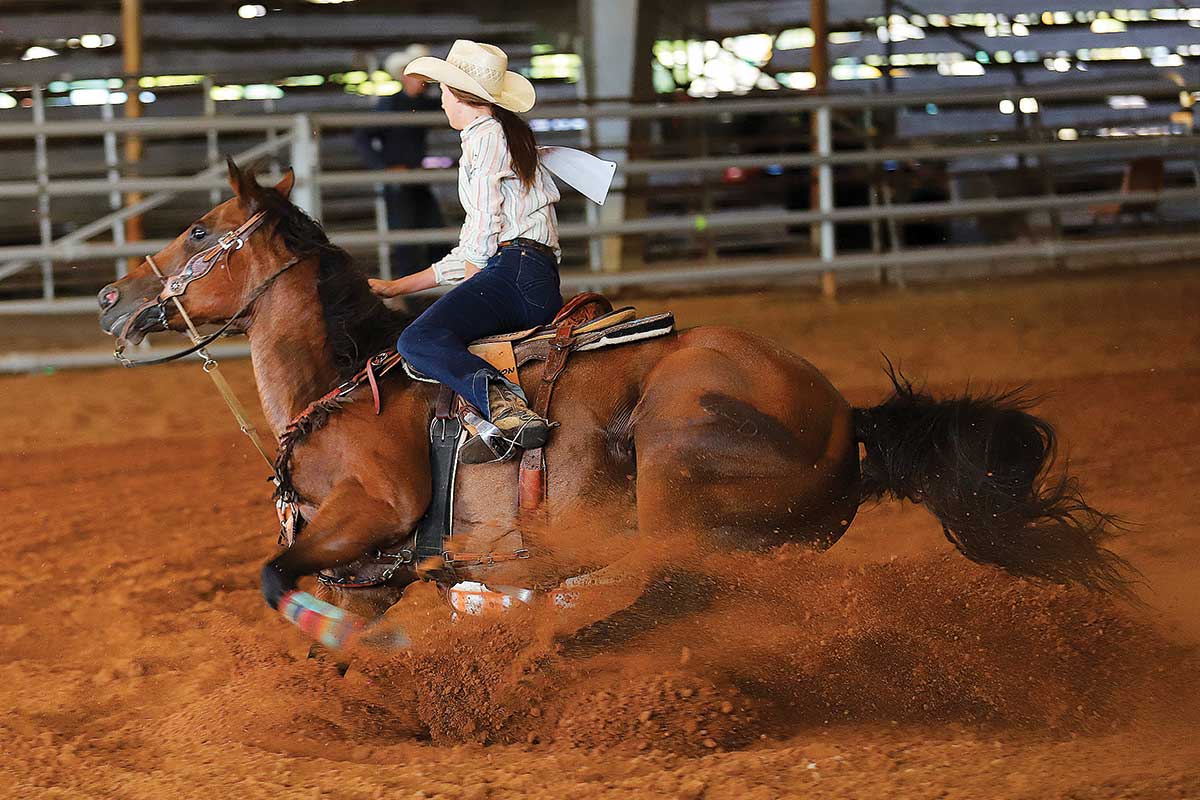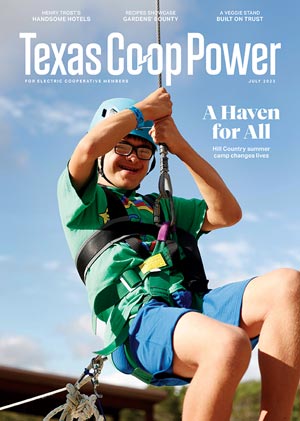Mention the word “rodeo” to anyone, and more than likely, they’ll immediately think of Texas. While the world’s largest rodeo doesn’t call Texas home (that honor belongs to Canada, home of the Calgary Stampede), Texas does host the second-largest, in the form of Houston’s Livestock Show and Rodeo.
While rodeos and livestock shows appear all over the state, East Texas has some of the oldest and liveliest of those offerings.
East Texas rodeos have long been a vibrant part of the region’s cultural identity. From small community events to large professional competitions, rodeos in East Texas bring together people from all walks of life to celebrate the heritage of the American West.
For the uninitiated, typical rodeo events include calf roping, barrel racing, bull riding, saddle bronc, bareback and other exciting competitions that showcase the skill and bravery of the riders and their horses. Additional events designed to entertain the younger folks, such as mutton busting, greased pig competitions and chuck wagon races, enhance the experience and boost attendance.
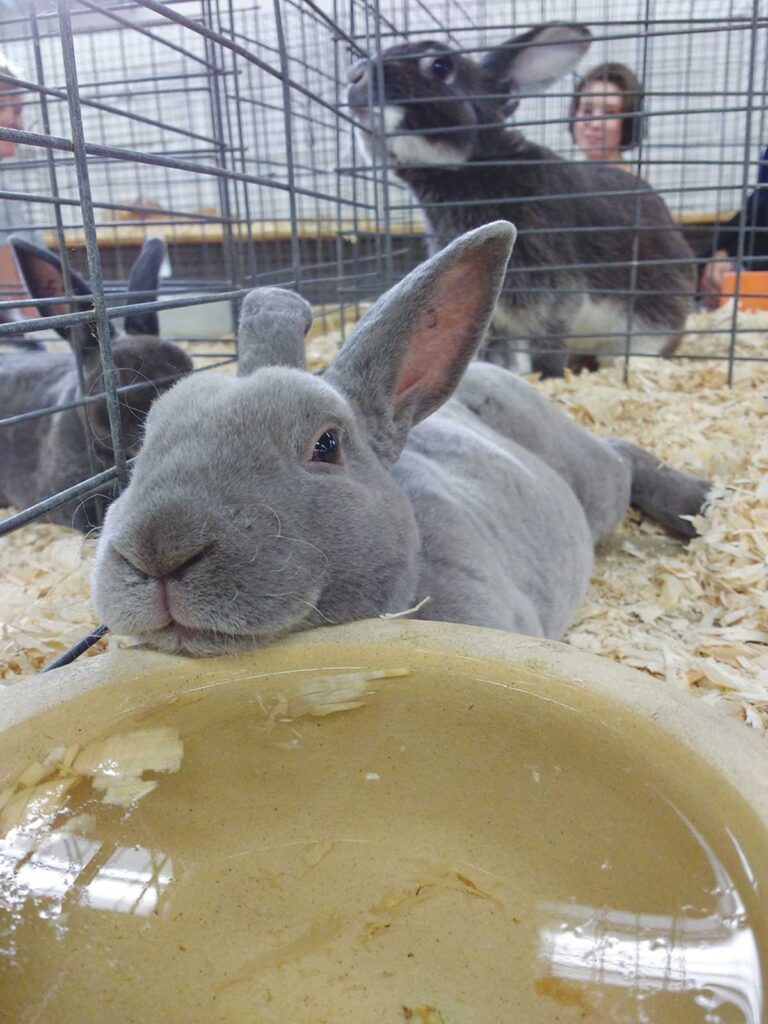
In addition to traditional rodeo events, most rodeos in East Texas feature livestock shows, which includes judging animals, such as the rabbits shown here.
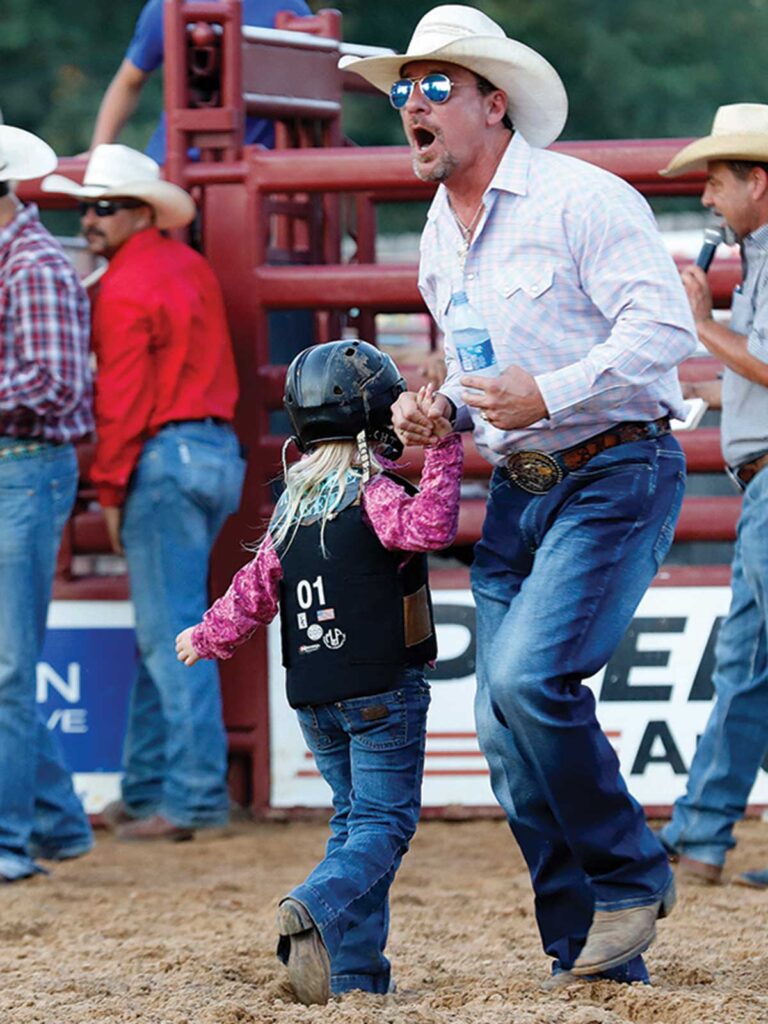
A man congratulates a girl after she competed in the mutton busting competition at the San Jacinto County Fair and Rodeo.
Sam Houston EC
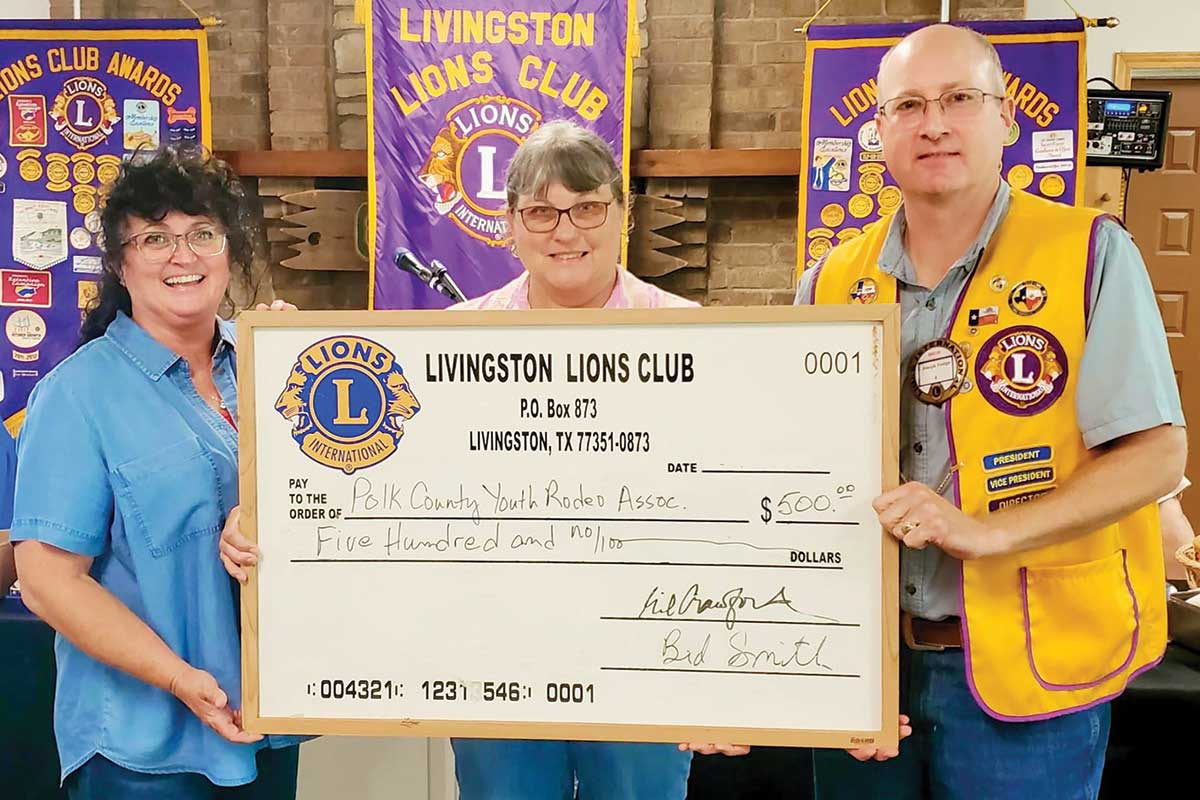
This year, the Livingston Lions Club made a $500 donation to the Polk County Youth Rodeo Association. From left, Patty Gokey, Julie Bergman and Livingston Lions Club President Joseph Pedigo.
Courtesy of Livingston Lions Club
Many rodeos in our part of the state are held in conjunction with county fairs and generally include livestock judging, where entrants, usually students, enter pigs, sheep, cows and rabbits they raised to win scholarship money. In addition, spectators can enjoy live music, carnival rides and all kinds of food while soaking up the festive atmosphere. Rodeos in East Texas tend to be family-friendly, with events and activities for people of all ages to enjoy.
East Texas boasts more than two dozen rodeos per year—more than most entire states hold. The rodeo business in East Texas is so prolific that it once spawned its own magazine. From the smallest kids wrestling pigs to world champion bull riders, East Texas has played host to them all, making rodeos a very popular outdoor activity.
The exact origins of rodeos are not entirely clear, as the sport evolved over time from various traditions and practices related to ranching and cowboy culture. Rodeos as we know them today are generally believed to have originated in the American West in the late 1800s, although the first “official” rodeo took place in 1869 in Deep Trail, Colorado.
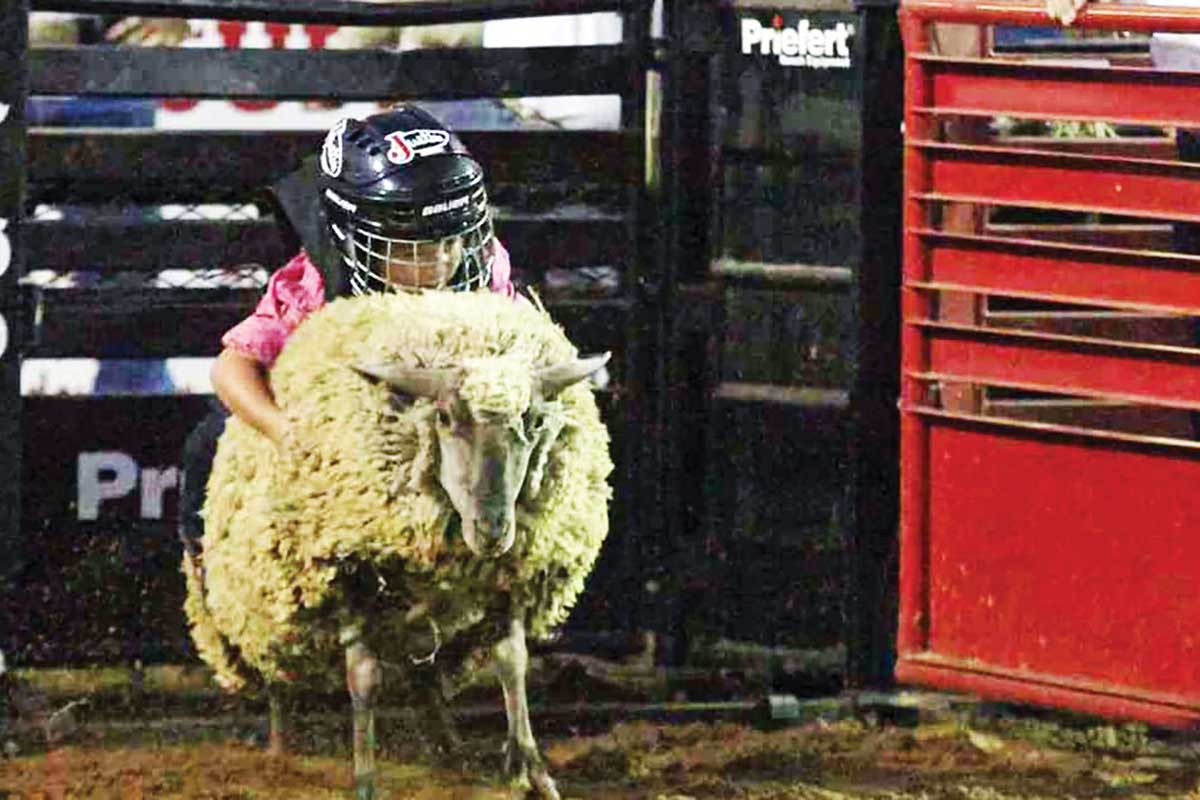
At the Gladewater Rodeo Round-Up, a youngster holds on to a sheep during the mutton busting competition. Riders must remain on the animal for six seconds as it races across the arena in order to win.
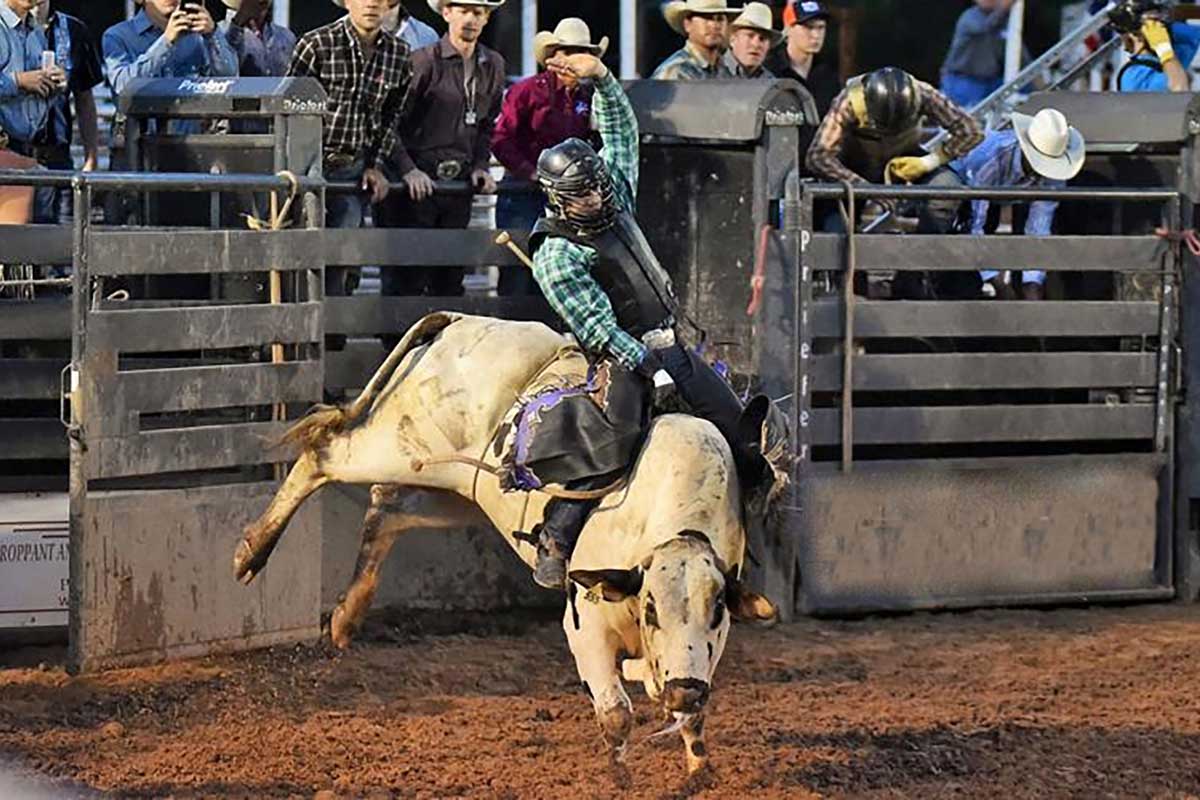
Fellow riders watch as a contestant in the Panola County Cattleman’s Pro Rodeo in Carthage tries to stay on a bucking bronco for eight seconds.
One of the oldest rodeos in East Texas is the Gladewater Round-Up Rodeo. Started in 1937 by famed Texan Jack Yates, the rodeo is held annually in early June and features professional riders from all over the country.
In addition to the pro events, one of the highlights is the mutton-bustin’ event, which features kids between ages 5 and 7 holding on for dear life as they ride a sheep around the arena. The kids win prizes if they can stay on for six seconds.
The Panola County Cattlemen’s Pro Rodeo is another of the oldest rodeos in East Texas, dating back more than 70 years. Held in Carthage each May, the rodeo continually draws big crowds and some of the largest numbers of entrants of all East Texas rodeos. Terry Holland, Panola Cattlemen’s Association president, said numbers took a hit during the pandemic but jumped back to above-normal levels last year.
“Last year we had a total of 325 contestants, including 111 barrel racers,” Holland said. “Everything had been shut down for so long, finally guys were getting a chance to rodeo again.”
Events in the Panola County rodeo are approved by the Professional Rodeo Cowboys Association, featuring bull riding, bareback riding, saddle bronc riding, steer rustling, team roping and barrel racing. They also host a calf scramble each night for kids and a goose scramble for kids ages 6 and younger.
San Jacinto County will host its annual fair and rodeo September 22–30 this year at the fairgrounds in Coldspring. In addition to the rodeo events, the SJC Fair and Rodeo includes a barbecue cook-off, livestock show, carnival midway, a cornhole tournament and a parade. As with many similar events in East Texas, it’s the rodeo action that draws the biggest crowds.
One of the most famous rodeos in the country was held in Huntsville for many years. Known as the Texas Prison Rodeo, the event was started in 1931 to provide an activity for inmates while generating income for educational materials within the prison. This rodeo was made famous in the 1980 movie Urban Cowboy with John Travolta and Debra Winger, as well as being parodied in the Richard Pryor and Gene Wilder film Stir Crazy. The Texas Prison Rodeo was discontinued in the mid-1980s when structural failures with the facilities and a lack of funding for repairs rendered it unfeasible to continue.
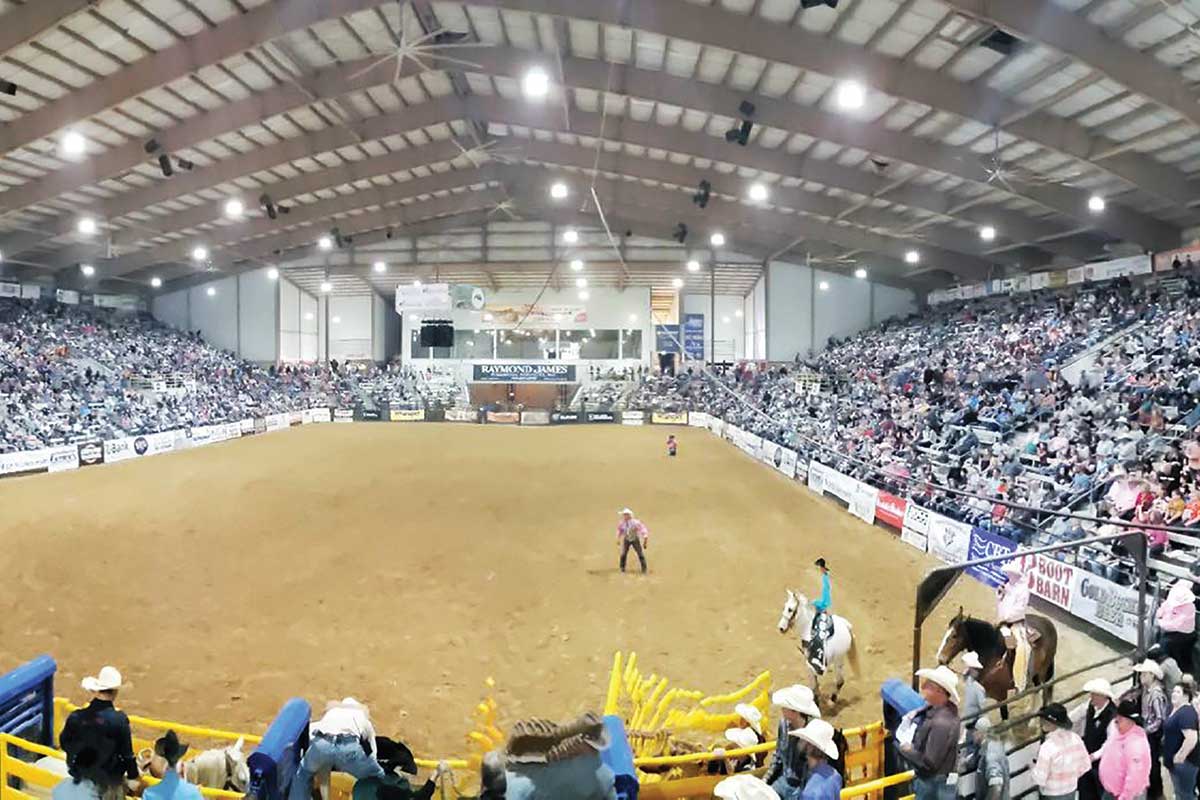
The Angelina Benefit Rodeo in Lufkin draws huge crowds every year.
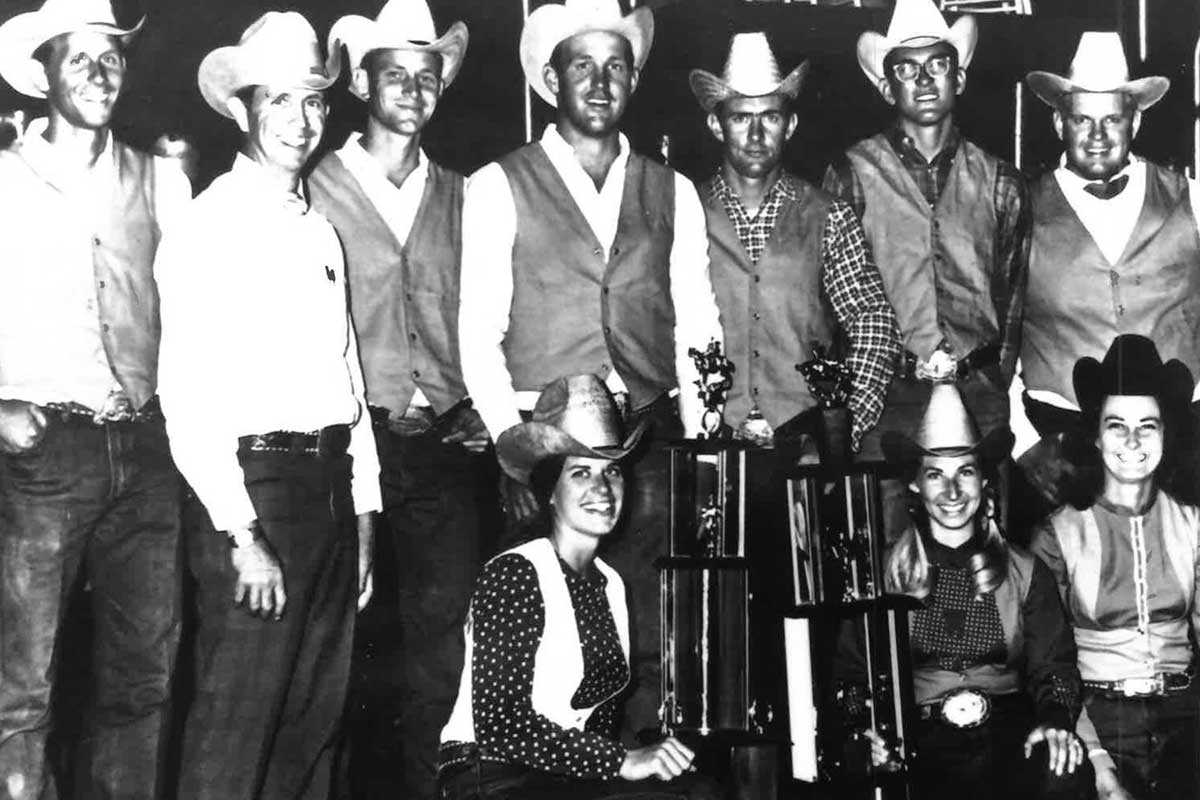
Sam Houston State University and rodeo coach Sonny Sikes won both the men’s and women’s national championships in 1968. The university still has a very successful rodeo team.
Sam Houston State University
All was not lost for Huntsville, however, as the Walker County Fair and Rodeo began annual events in the late 1970s. A sanctioned PRCA event, the Walker County Rodeo runs in late March and features cowboys from all over North America. Much like the Houston Rodeo, the Walker County Rodeo features concerts by well-known country musicians, unique foods, a carnival midway, livestock show, parade and even a domino tournament.
Also in Huntsville, Sam Houston State University is one of several Texas colleges that has an intercollegiate rodeo team. In 1968, the SHSU men’s and women’s rodeo teams won their respective National Intercollegiate Champions Finals held in Sacramento, California. SHSU has been a force in collegiate rodeo for decades, winning multiple national titles.

A competitor keeps his eye on the prize in the calf roping competition at the Polk County Youth Rodeo in Livingston.
Sam Houston EC
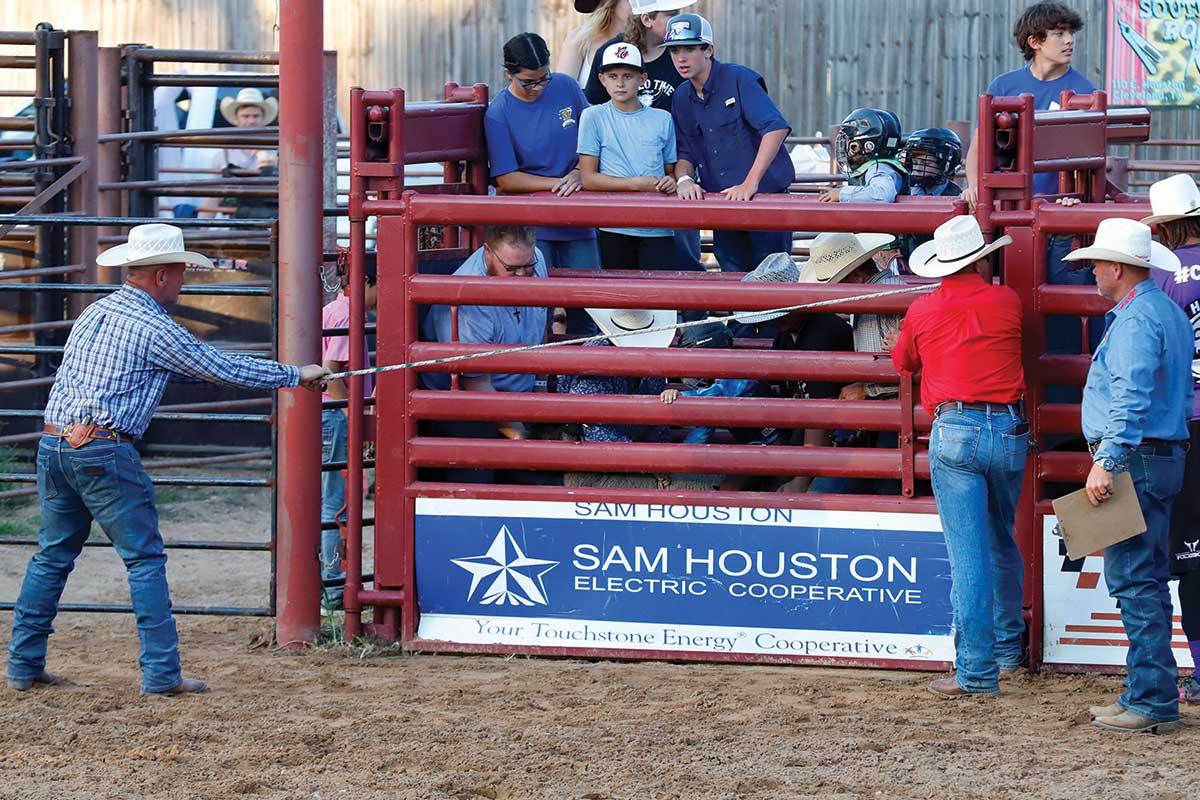
Sam Houston Electric Cooperative is a proud sponsor of the San Jacinto County Fair and Rodeo.
Sam Houston EC
The annual Angelina Benefit Rodeo is held annually in April in Lufkin. The event, which has been held for over a half century, draws huge crowds and generates money for scholarships.
The Franklin County Sheriff’s Posse Rodeo is held the first week of September every year. It features traditional rodeo events and adds a few less common ones like cowgirl breakaway roping, team roping and steer wrestling.
At the end of March each year, Livingston hosts the Trinity-Neches Livestock FFA and 4-H Show and Rodeo at the Barney Wiggins Memorial Arena. This rodeo, founded by J.E. Seamans in 1945, benefits the Future Farmers of America and area 4-H Clubs. In that rodeo’s first year, all FFA and 4-H clubs between the Trinity River and Neches River were invited to participate, and the show was held on the grounds of the Livingston Gin Co., where 14 boys showed pigs and chickens.
Slowly adding contestants from Corrigan, Chester, Goodrich, Shepherd, Coldspring and other neighboring towns, the rodeo was added in 1951 and drew a record crowd of more than 3,000. Changes have been made to ensure that this Polk County tradition in agricultural education continues.
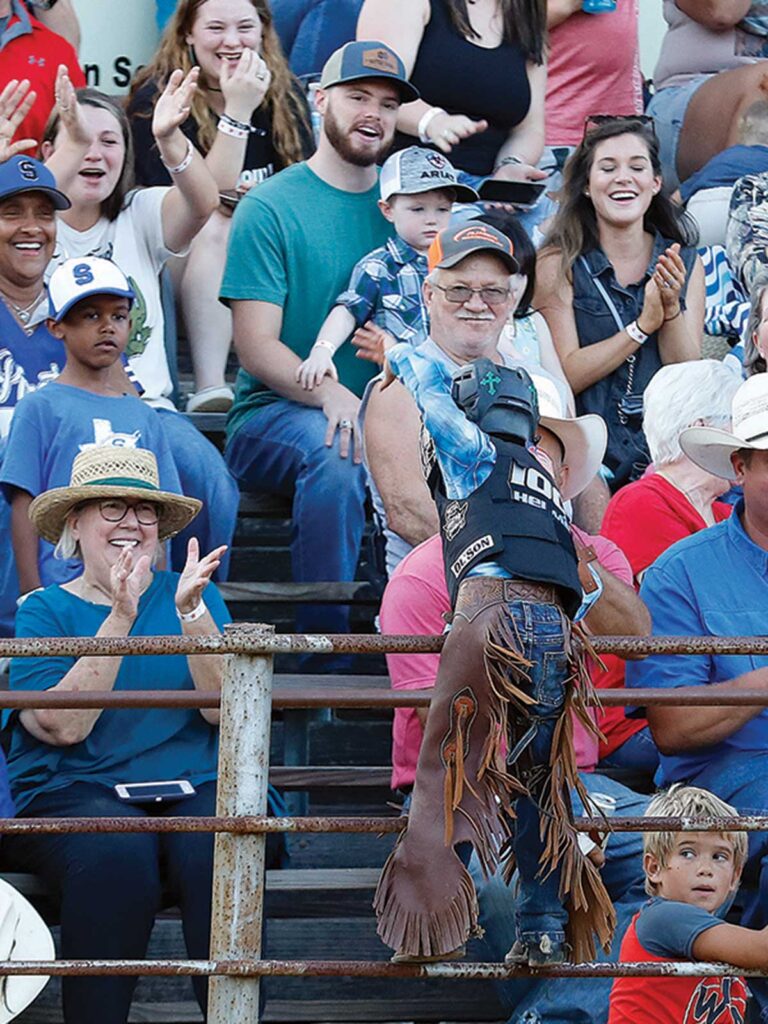
A young cowboy celebrates with the crowd after his winning mutton busting ride at the San Jacinto County Fair and Rodeo.
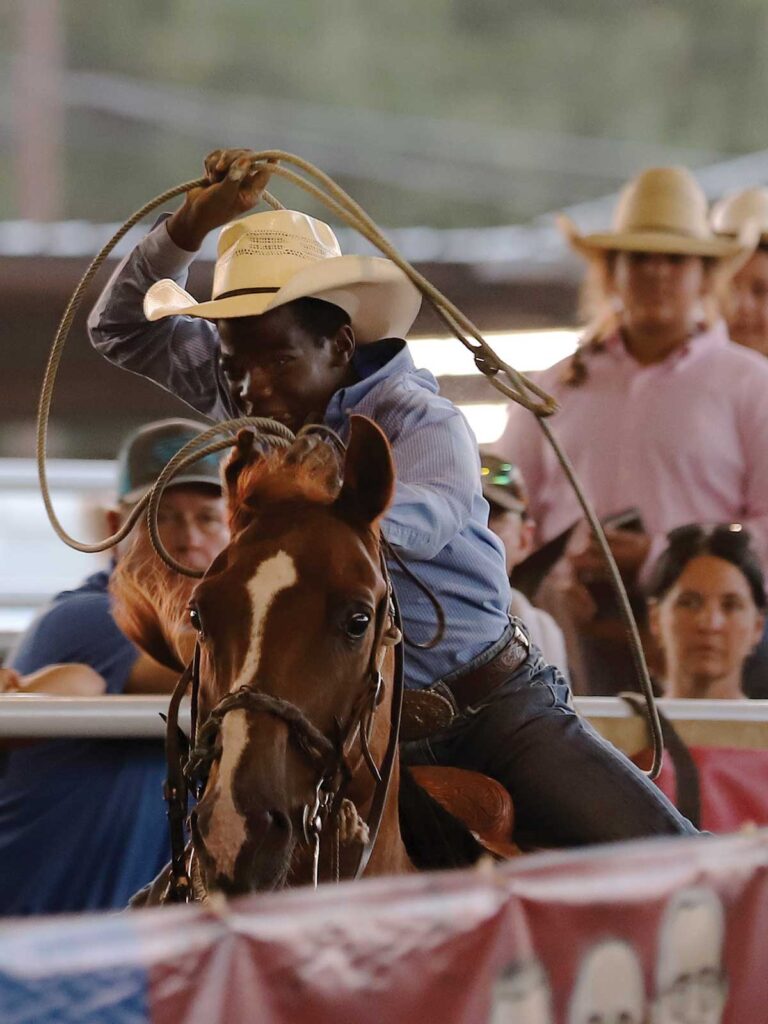
A competitor participates in the calf roping competition at the Polk County Youth Rodeo in Livingston.
Sam Houston EC
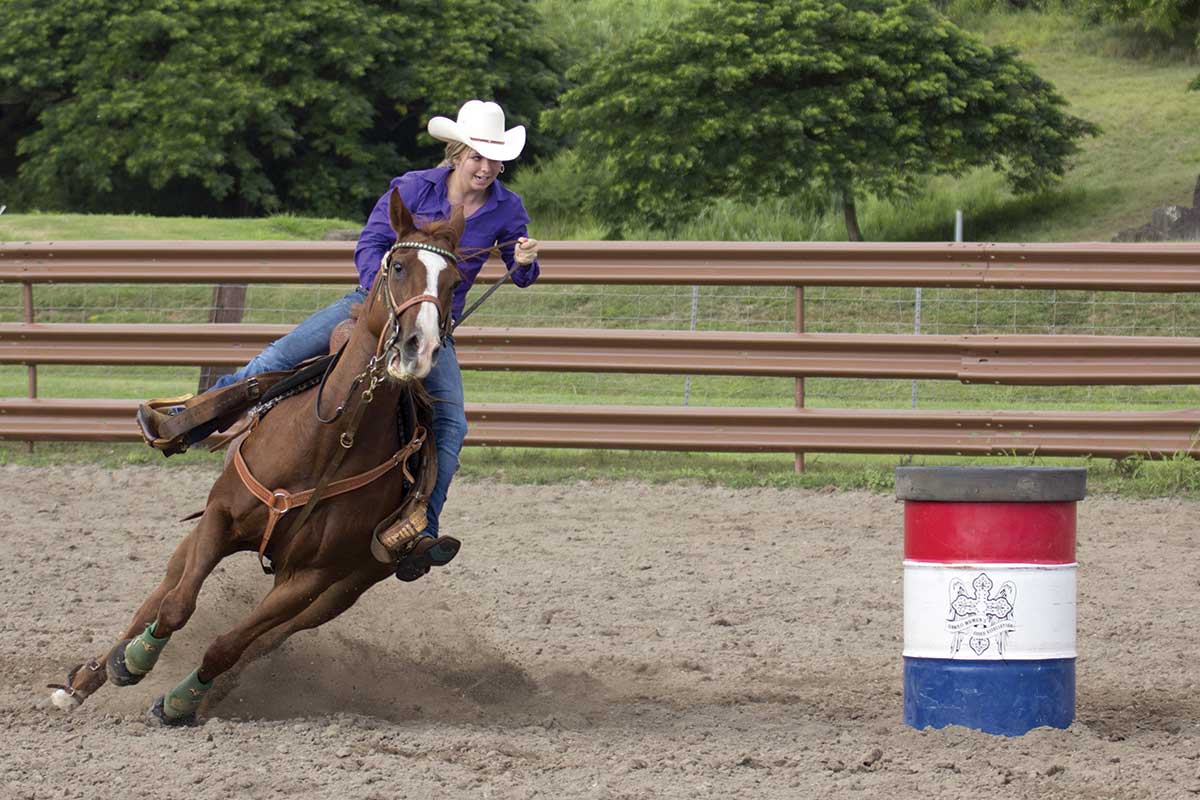
A sport practiced primarily by women, barrel racing can be extremely dangerous, not only for the horse but the rider as well. Timing the turns requires great skill and years of practice.
The Polk County Youth Rodeo Association holds its annual youth rodeo in July. This year will mark the 62nd rodeo, which features such events as cloverleaf barrels, pole bending, straightaway barrels, goat tying/slapping, speed race, mutton busting and dummy roping. This annual series for youths from Polk and surrounding counties provides competition for every level of rider. Prizes in these events range from saddles to belt buckles and tack.
PCYRA also hosts playdays in June, August, September and October for kids to practice their skills.
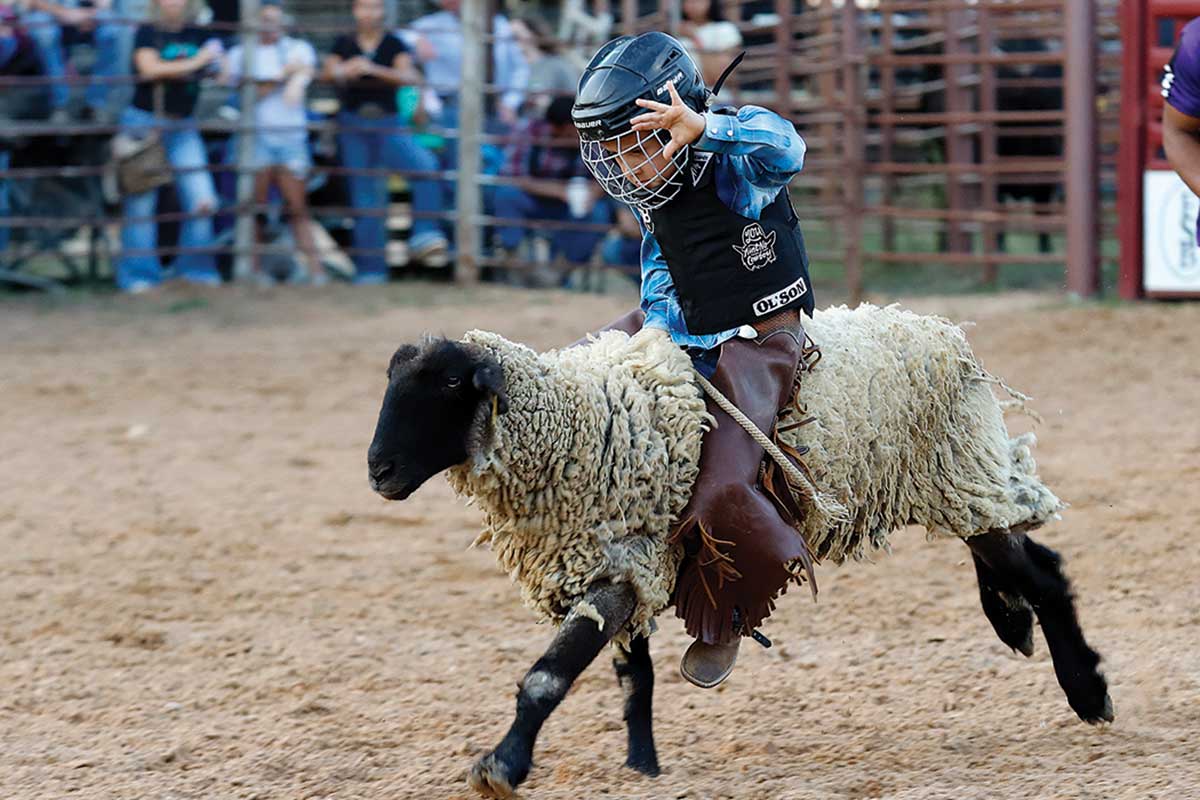
A boy rides a sheep like a bull rider during the mutton busting competition at the San Jacinto County Fair and Rodeo in Coldspring.
Sam Houston EC
East Texas rodeos offer much more than just entertainment— they serve as platforms for fostering educational opportunities and skill development for children. These events not only showcase thrilling competitions and engaging performances, but also contribute to our local communities by providing scholarships and training programs to support the aspirations of ambitious youths.
Through entertainment and educational initiatives, East Texas rodeos create an inclusive environment that promotes enjoyment and the advancement of young talent.
